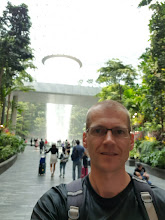Ik krijg altijd een dubbel gevoel als ik naar een dierentuin ga en in dit geval Avifauna. Hier een selectie van de vogels die zij daar hebben.
Stellers zeearend in kooi
Stellers zeearend in vrije natuur
Van oorsprong kwam deze arend in Europa voor maar is daar nu helemaal verdwenen. Nu komt hij alleen nog maaar voor in het 'verre oosten' van Rusland, China en Japan. De populatie wordt op 5000 geschat maar voor deze vogel is een fokprogramma opgestart.
Info Stellers zeearend
Zonparkiet/Sun conure
Leefgebied: Tropisch oerwoud Zuid-Amerika
Niet bedreigd diersoort.
In the past, the sun parakeet has been considered safe and listed as
Least Concern, but recent surveys in southern Guyana (where previously considered common) and the Brazilian state Roraima have revealed that it possibly is
extirpated from the former and rare in the latter. It is very rare in French Guiana, but may breed in the southern part of the country (this remains unconfirmed). This species is very popular in captivity, and large numbers have been caught for the pet trade. Today it is regularly bred in captivity, but the capture of wild individuals potentially remains a very serious threat. This has fueled recent discussions regarding its status, leading to it being uplisted to
Endangered in the 2008
IUCN Red List.
[8] 5646416164656121521
Gier
De Gier zweeft d.m.v. thermiek (opgewarmde lucht) omhoog.
Gier
Vale Gier in de vrije natuur
Lorie/Loriparakeet in Avifauna
Lories as Pets or in Aviculture:
Due to their endangered status, any suitable specimen that cannot be released back into their natural habitat (native range) should preferably be placed into a well-managed breeding program to ensure the continued survival of this species. Bron: http://beautyofbirds.com/chatteringredlory.html
Neushoornvogel in kooi
Neushoornvogel in vrije natuur
De Neushoornvogel (Hornbill) komt voor in Afrika, Azië en Melanesië (Indonesië, Papoea Nieuw Guinea Solomon Eilanden). Een aantal soorten wordt bedreigd met uitsterven.
Witte Pelicaan in Avifauna
Witte Peilcaan in Ethiopië
Info over de Pelicaan: http://beautyofbirds.com/pelicans.html
Aan de ene kant dus fantastisch dat je van dichtbij kunt zien in hoeveel kleuren en maten er vogels zijn. De andere kant van het verhaal is dat deze vogels niet in hun normale leefomgeving zijn en geen vrijheid hebben. Nu moet gezegd worden dat Avifauna ook fokprogramma's hebben om de bedreigde diersoorten te redden. Behoud van het regenwoud, stroperij en smokkel en milieu moet dus als eerste aangepakt worden.
De PETA heeft op een rij gezet waarom het niet goed is dat vogels in gevangenschap leven.
Een mooie film waarin dit ook naar voor komt is
RIO2.
Maar als ik zie hoe het in Jurong Bird Park te Singapore eruit ziet dan lijkt het alsof de vogels niets te klagen hebben.








.jpg)







